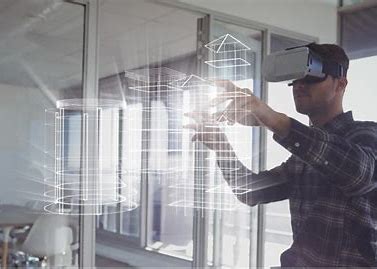Revolutionizing Design: How Engineers and Architects Can Use VR to Model Projects

Virtual Reality (VR) is transforming the way engineers and architects design, visualize, and refine their projects. By immersing themselves in a digital environment, professionals can create, explore, and modify models with unprecedented precision. Here’s how VR is revolutionizing the industry and why it should be part of every design workflow.
1. Enhanced Visualization and Concept Development
Traditional 2D drawings and 3D models on a screen can only go so far in conveying a design. With VR, architects and engineers can:
- Walk through a structure before it’s built, gaining a true sense of scale and proportion.
- Identify potential design flaws early in the process.
- Present more compelling visualizations to clients and stakeholders.
2. Improved Collaboration and Communication
Designing complex structures requires seamless collaboration between multiple disciplines. VR enables:
- Real-time, immersive design reviews with teams in different locations.
- More effective communication between engineers, architects, and clients.
- Reduction in costly misunderstandings by providing a shared, interactive space.
3. Streamlined Prototyping and Testing
Before committing resources to physical prototypes, VR allows:
- Testing structural integrity and spatial layouts in a virtual setting.
- Simulating environmental factors such as lighting, airflow, and material interactions.
- Reducing material waste and saving costs associated with physical prototypes.
4. Enhanced Training and Safety Planning
For large-scale infrastructure projects, VR is an invaluable tool for training and safety analysis:
- Engineers can simulate construction scenarios to prepare for potential hazards.
- Workers can familiarize themselves with site layouts before setting foot on location.
- Emergency response planning can be tested in a risk-free virtual environment.
5. Future-Proofing the Design Industry
As technology advances, VR will become an even more integral part of architectural and engineering workflows. Innovations such as augmented reality (AR) integration, AI-driven simulations, and real-time data visualization will continue to push the boundaries of what’s possible.
Embrace the Future with VR
Virtual reality isn’t just a tool for gaming and entertainment; it’s a game-changer for architects and engineers. By incorporating VR into design processes, professionals can create more efficient, accurate, and innovative solutions. Whether you’re designing a skyscraper or planning a residential development, VR can help turn your vision into reality.
ProSoft IT can help with all your VR needs, from headsets to software, ensuring you have the right tools to take full advantage of virtual reality technology.
